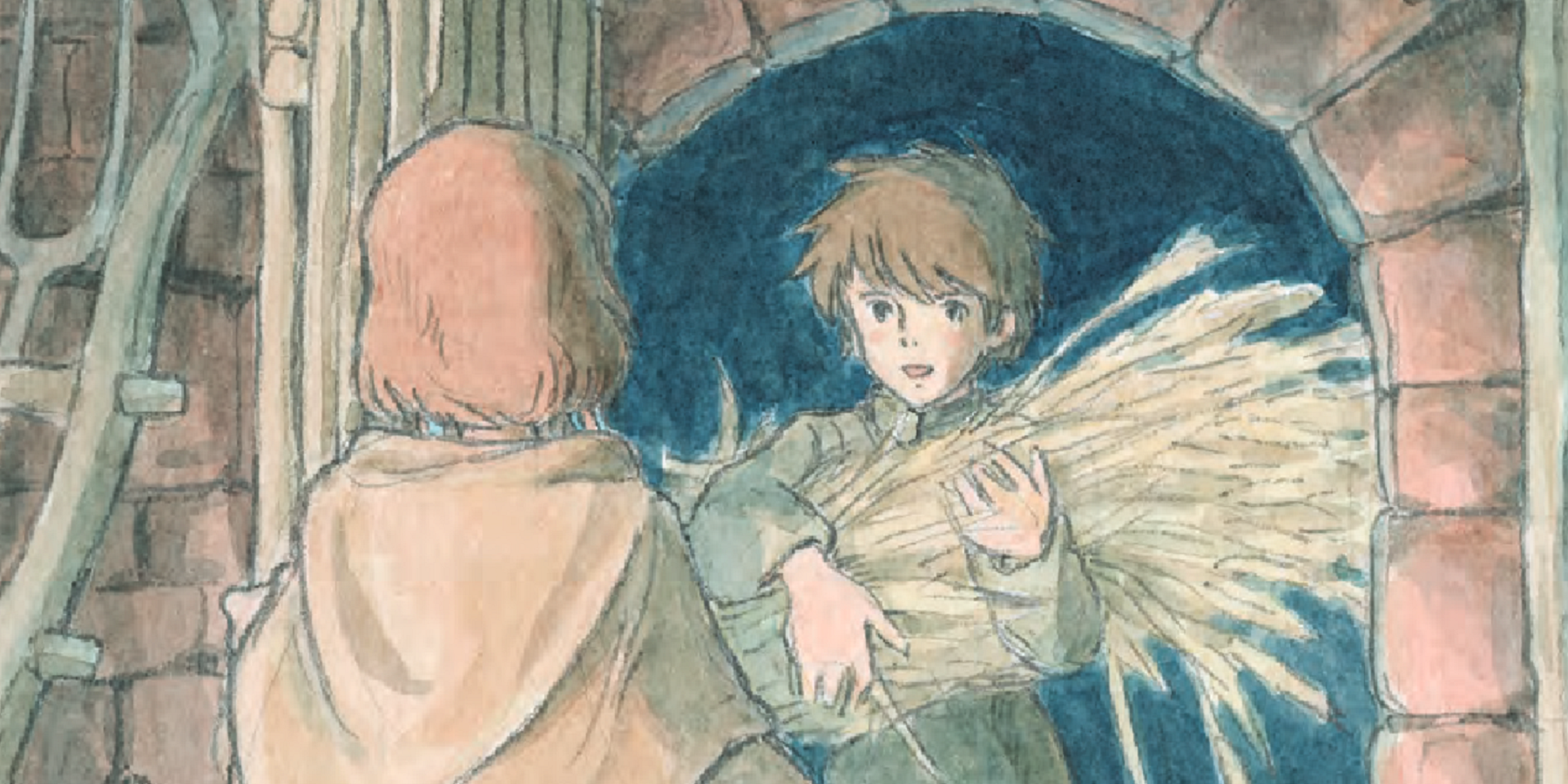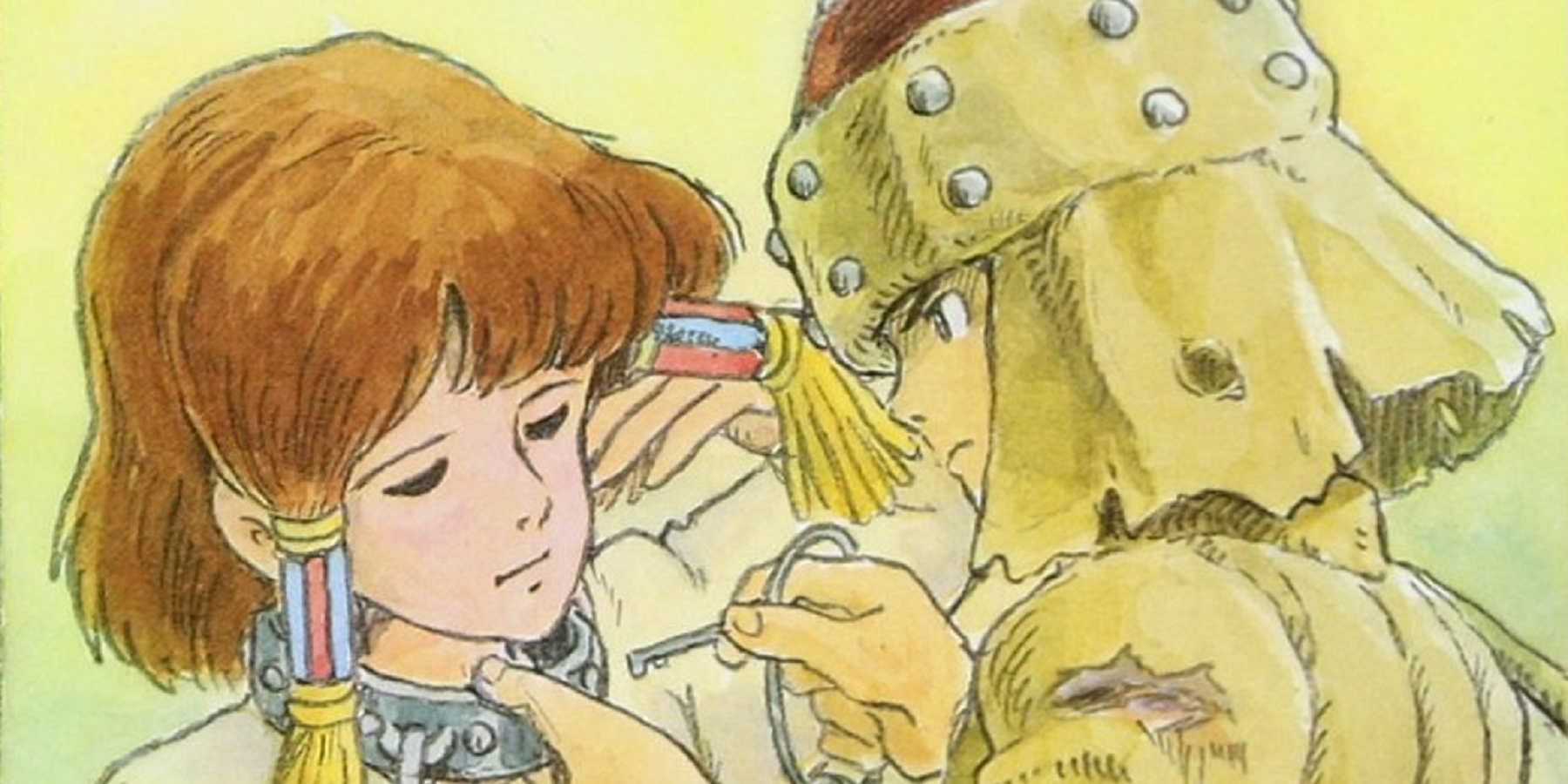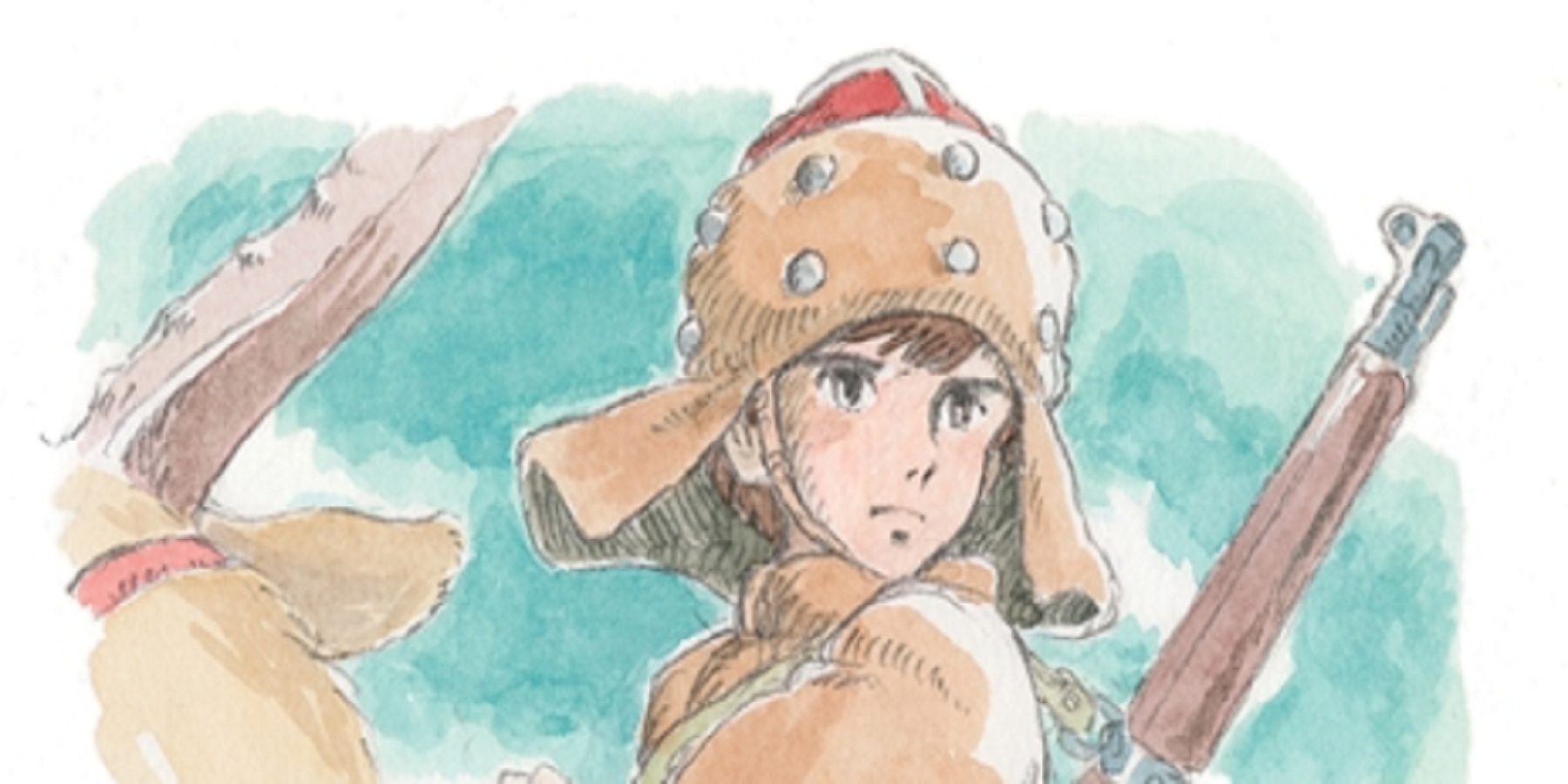With the recent English-language publication of Shuna’s Journey, an overlooked work by the most legendary anime director of all-time is now unlocked for a new generation of fans. The one-volume, full-color graphic novel is a richly-layered fable about a young prince hoping to bring new crops to his small kingdom, and it offers an illuminating look into a key period of the legendary creator’s development.
Now, a discussion with translator Alex Dudok De Wit goes over the place of Shuna’s Journey within Miyazaki’s larger canon as well as the challenges and joys of bringing the work to a wider readership.
GameRant: Shuna’s Journey is a very interesting work in Miyazaki’s canon, and one that was overlooked in much of the world for a long time. What inspired this new translation, and how did it get off the ground?
Dudok De Wit: I was reading Shuna's Journey early in the pandemic. As it happened, I was also working with Studio Ghibli on something at the time, and during our correspondence I suggested that this book, being very beautiful, really ought to be translated into English sometime. And that if it ever was, I'd love to do the job myself! Ghibli agreed to let me approach Anglophone editors with this proposal. Shuna's Journey was 37 years old by then, and if I'm honest, I hadn't expected that Ghibli would be ready to hand over the English-language rights at that point. So it came as a surprise when they said yes.
GR: In your afterword to the graphic novel, you place Shuna's Journey within the context of not just manga but the Japanese emonogatari form of illustrated stories with color. The striking watercolors of Shuna's Journey are one of its strongest components, so would you regard access to watercolor as a major factor in Miyazaki choosing to tell this story in this format?
Dudok De Wit: Whether Miyazaki opted to tell his story as an emonogatari because he wanted to use watercolor? I'm not entirely sure, as I've never talked to him about this and, to my knowledge, he hasn't spoken about it publicly in detail. But it's important to stress that he initially mulled the idea of telling the story in a film, as he explains in his afterword. When he couldn't find the backing, he decided to make a book at the prompting of the editors of Animage, an animation magazine in Japan. I think the story lends itself to his approach: based on a folk tale, it isn't a particularly complex narrative, and the protagonist spends a lot of it in solitude as he travels across all kinds of spectacular landscapes. So a book of rich, sweeping illustrations, straightforward captions and almost no dialogue makes sense. By then, Miyazaki was working on the Nausicaä manga, with its knotty black-and-white penwork, and maybe he also wanted a break from that style. I'd add that watercolour is a technique he often uses to create concept artwork for films and other projects.
GR: Let's move onto the comic itself. Not to spoil too much, but the sense of amnesia that Shuna feels near the end of the book plays with Miyazaki's most frequent subjects of quiet isolation and coming-of-age. Do you see Miyazaki's exploration of these themes in Shuna as a sort of precursor to how he handles them in his subsequent films, and what are your thoughts on the graphic novel's themes and message--if there is any one clear message--more broadly?
Dudok De Wit: Yeah, I suppose Shuna's Journey works as a coming-of-age story of sorts. Shuna sets out as a young man full of daring and smarts, but also a streak of youthful self-belief that's just waiting to be popped. As he discovers the big wide world, we start to see how little he knows. When he initially fails to save the slaves, he seriously doubts himself for the first time. But this is nothing next to the breakdown he experiences after presuming to enter the land of the god-folk. It's a classic case of hubris and nemesis. He survives but has to rebuild himself almost from scratch, and Miyazaki entwines this process with the tasks of learning to love another person and to work the land: to sustain oneself spiritually and materially, in a sense. These, the story suggests, are the rites of passage that lead one into maturity.
I'm not sure about "quiet isolation": it's true that the village of the last chapter is quiet, but there's a storm inside Shuna. Not many other Miyazaki protagonists go through such a psychic upheaval. I think this can also be taken as a portrait of someone buckling under the pressure they've put on themselves, much as Nausicaä does at points in the manga Nausicaä of the Valley of the Wind. Miyazaki, a famously intense worker, created the book at a difficult point in his life, when his animation career was in a quiet stretch between the relative commercial failure of his debut feature and the founding of Ghibli. I think he's pouring a lot of himself into Shuna.
GR: I definitely see that, of the journey as a passage into maturity. In Shuna's sense of self-rebuilding there's almost something reminiscent of the growth of Kiki in Kiki's Delivery Service, perhaps? In that through both characters Miyazaki illustrates a sense of youthful spark, then a sort of loss of that and a gradual recovery of purpose only through the effortful renewal of their relationships with others.
Dudok De Wit: Yes, or Chihiro in Spirited Away, or other Miyazaki heroines and heroes besides. In the broadest sense, this sense of hope that comes from renewal, from changing oneself or one's surroundings through great effort, is something that runs through his work. I'd add that there's an interesting twist with Shuna: he starts off as a prince, albeit not a very wealthy one, but is reduced to a beggar after his encounter with the god-folk. He then has to live for a while in the most humble of circumstances, then (re)learn to work the land, just like the rest of the villagers. Also, the girl he comes to love, Thea, explicitly tells him she's not a royal. There's a riches-to-rags-to-(a new kind of)-riches sub-narrative here, with Miyazaki subtly stressing the class element.
GR: What were some of your own biggest considerations during the translation process? Did the austere narration make it more streamlined than translating a more text-heavy work, or was it its own challenge having less material to work with for translating things into the best wording?
Dudok De Wit: Apart from accuracy, the biggest consideration – as always with translation – was finding the right voice. Luckily, this came quite easily: Miyazaki adopts a direct style, with short sentences, evocative adjectives, simple metaphors and no excess description. This style was familiar to me from folk and fairy tales, which I've read (and had read to me) since I was a child, so it was deeply ingrained in me. Obviously the shortness of the text makes the job easier in one sense, but as you say, this puts extra pressure on the words that are there. Often, a double-page spread will be accompanied by just a few sentences, so you want to make sure they count. I was liberal with a few passages, including the opening sentences, which – being the first words the reader reads – carry more weight than any others. The original text does a typically tricky Japanese thing: it omits the subject. Translated as literally as possible, the first words would be: "Which period? No longer certain. Distant past? Or far in the future?"
The meaning is clear enough, but the syntax is awkward for the English translator. You could tweak it to "When did this happen? It is no longer clear. Was it long ago, or far in the future?" But I don't think these sentences really pop, not least because you have to insert a weak dummy subject ("it") into the second one. So I went with "These things may have happened long ago; they may be still to come. No one really knows anymore." I invented the "no one" – the idea of a human subject for the sentence – but I thought this was justified, as the Japanese suggests that the events we're about to read about have been passed down as a story.
GR: Lastly, are you considering any other translations in the future? Shuna's Journey is something you obviously have a strong connection to and passion for, though can you see yourself helping to localize any other titles in the future, either from Ghibli creators or the broader manga sphere?
Dudok De Wit: No current plans to translate fiction. I'm working on the production team of an animated feature, Ghost Cat Anzu, which is being made across France and Japan, and this requires a fair bit of translation in itself. But yeah, as you know, there are still many untranslated works by Miyazaki, let alone other brilliant creators of manga and graphic novels. I'd certainly like to plunge back into that world someday.
---
Shuna’s Journey is out now, published by First Second Books.



